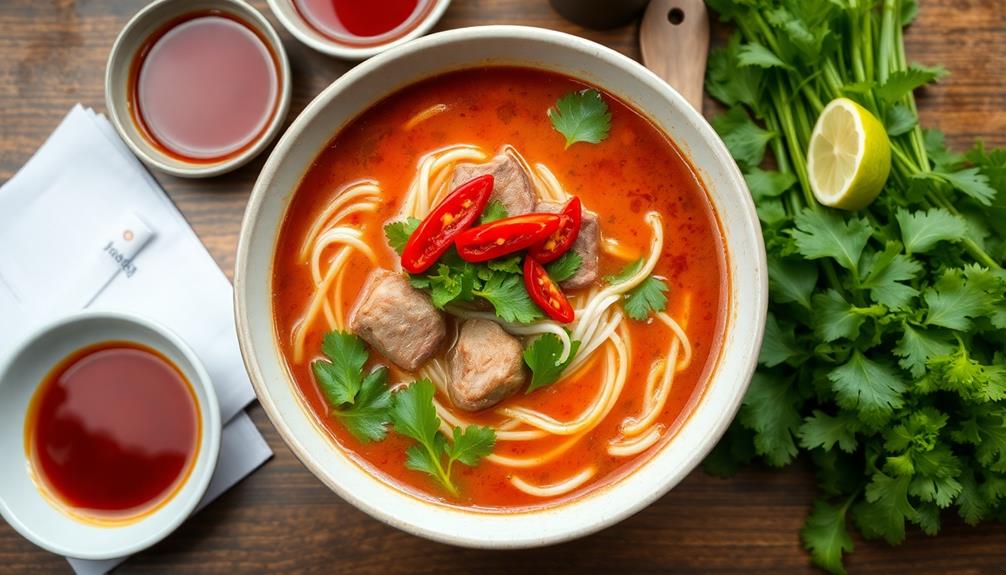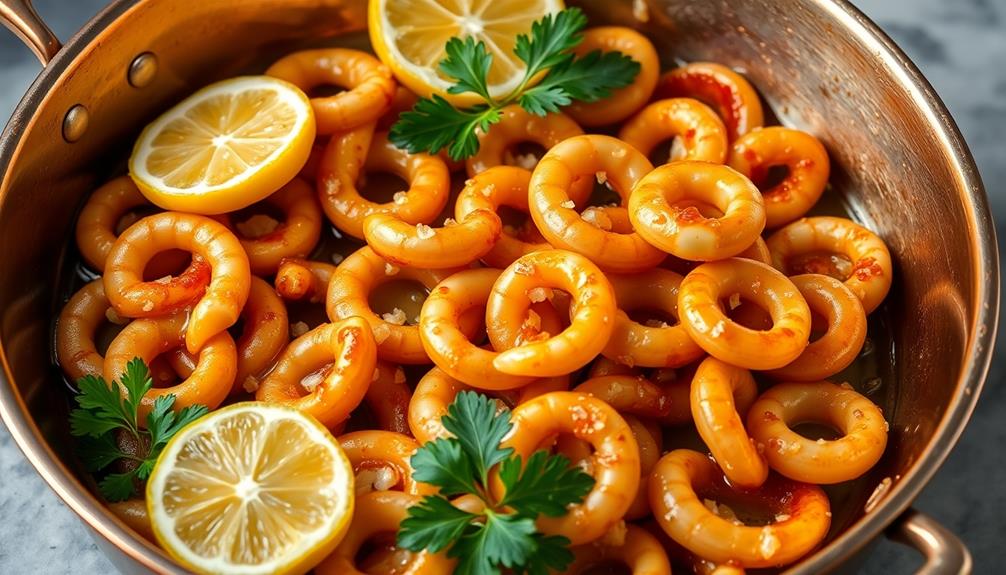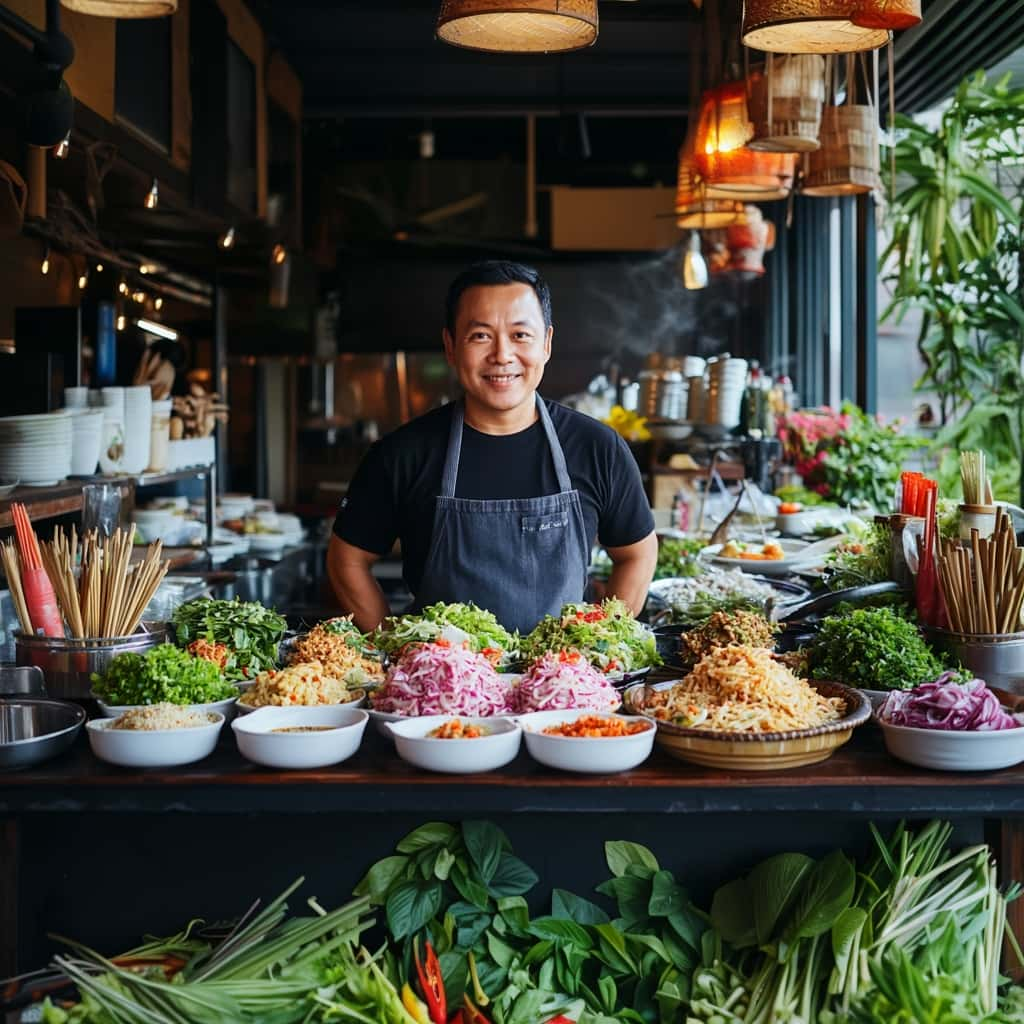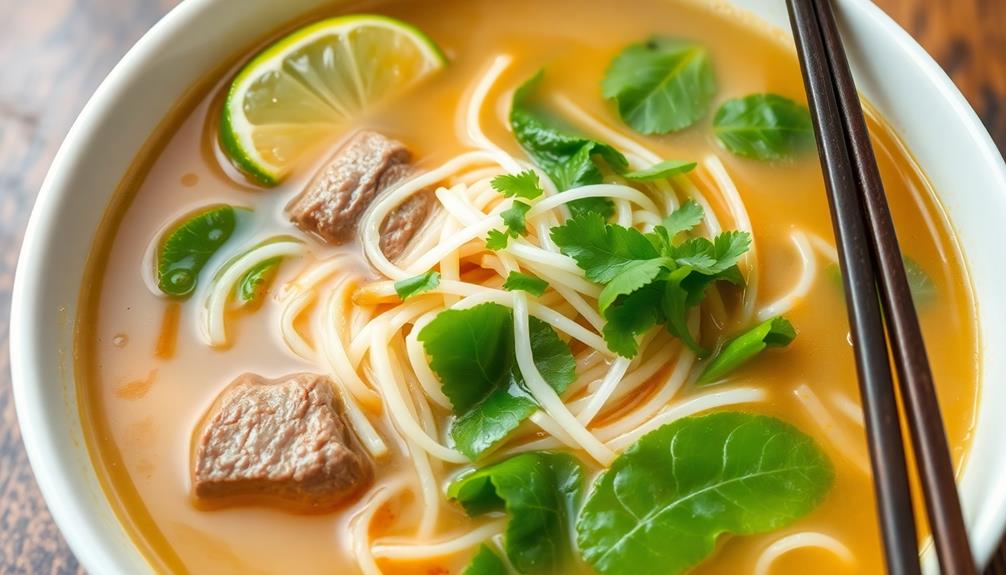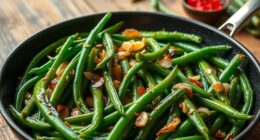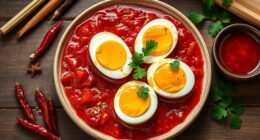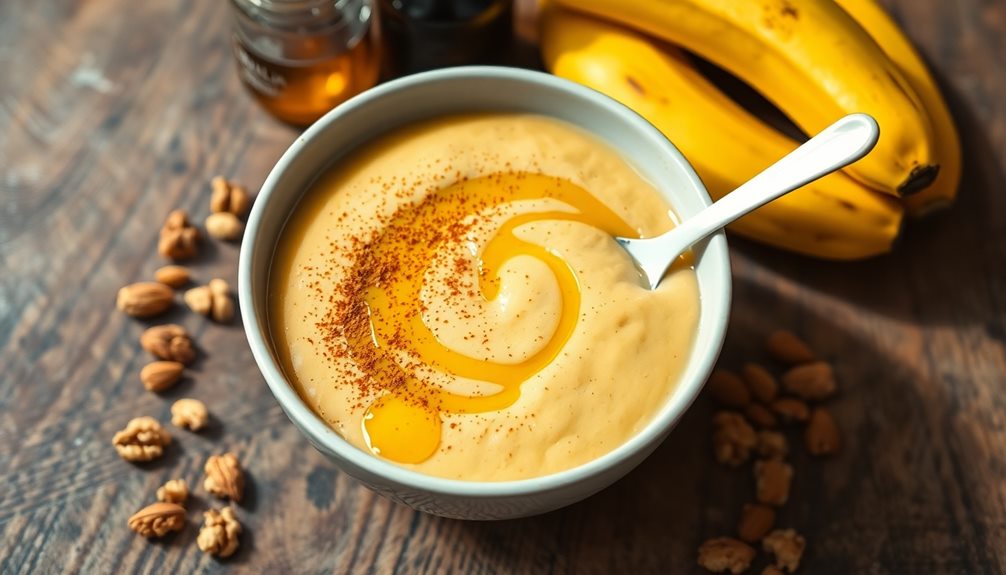Kuay Tiew Reua, or "boat noodles," hails from Thailand's floating markets, where vendors once rowed boats selling aromatic broths, tender meats, and chewy rice noodles. This beloved street food has evolved with unique regional variations, yet it still captures the essence of Thai culinary heritage. You'll find a balance of sweet, sour, and savory flavors in every bite, complemented by vibrant garnishes like cilantro and bean sprouts. Slurping down a bowl of Kuay Tiew Reua isn't just a meal – it's a cultural experience that brings people together. If you'd like to learn more about the rich history and preparation of this iconic Thai dish, keep reading.
Key Takeaways
- Kuay Tiew Reua is a traditional Thai noodle dish that originated from the floating markets along the Chao Phraya River in Thailand.
- The dish features a range of ingredients, including rice noodles, thinly sliced beef or pork, and a variety of seasonings and garnishes.
- Kuay Tiew Reua is known for its balanced flavor profile, which combines sweet, sour, and savory notes, with the freshness of the ingredients.
- The communal aspect of enjoying Kuay Tiew Reua, often shared among friends, fosters social interactions and a sense of togetherness.
- Kuay Tiew Reua is a versatile dish that can be customized to individual tastes and dietary preferences, reflecting the rich culinary heritage of Thailand.
History
Kuay Tiew Reua, a beloved Thai noodle dish, has its roots firmly planted in the rich tapestry of Thai culinary history. This iconic dish traces its origins to the bustling floating markets along the Chao Phraya River, where enterprising vendors would row their boats laden with fragrant noodles, meats, and aromatic herbs.
Over time, the dish evolved, with each region developing its own unique variations, reflecting the diverse flavors and culinary traditions of Thailand.
The name "Kuay Tiew Reua" translates to "boat noodles," a nod to the dish's origins on the waterways. The noodles are typically made from rice, providing a delightful chewy texture, and are served in a savory broth, often infused with the rich flavors of beef or pork.
Garnishes like crispy pork, bean sprouts, and fresh herbs add vibrant layers of flavor and texture to this beloved dish.
Recipe
Kuay Tiew Reua, a beloved Thai noodle dish, is a harmonious blend of flavors and textures. This signature dish, often found in floating markets and street food stalls, is a testament to the rich culinary heritage of Thailand.
The key to a delectable Kuay Tiew Reua lies in the careful selection and preparation of the ingredients. The aromatic broth, infused with the essence of spices and herbs, serves as the foundation upon which the dish is built, while the chewy rice noodles and tender protein create a satisfying mouthfeel.
- Rice noodles
- Beef or pork, thinly sliced
- Fish balls or shrimp (optional)
- Garlic
- Shallots
- Thai chili peppers
- Fish sauce
- Palm sugar
- Lime juice
- Cilantro
- Bean sprouts
- Scallions
To prepare the dish, first, bring the broth to a simmer and add the sliced meat, allowing it to cook through. Then, add the rice noodles and fish balls or shrimp, if using, and cook until the noodles are tender.
In a separate pan, sauté the garlic, shallots, and chili peppers until fragrant. Combine the sautéed aromatics with the noodle mixture, and season with fish sauce, palm sugar, and lime juice to taste. Garnish with fresh cilantro, bean sprouts, and scallions.
When preparing Kuay Tiew Reua, it's essential to balance the flavors to achieve the perfect harmony of sweet, sour, and savory notes. Adjusting the seasoning to your personal preference is key.
Additionally, the freshness of the ingredients and the careful timing of the cooking process will ensure that each bite is a delightful culinary experience.
Cooking Steps
Bring the broth to a gentle boil, then add the thinly sliced beef.
Next, toss in the chopped cilantro and the thinly sliced pork.
Step 1. Bring Broth to a Gentle Boil
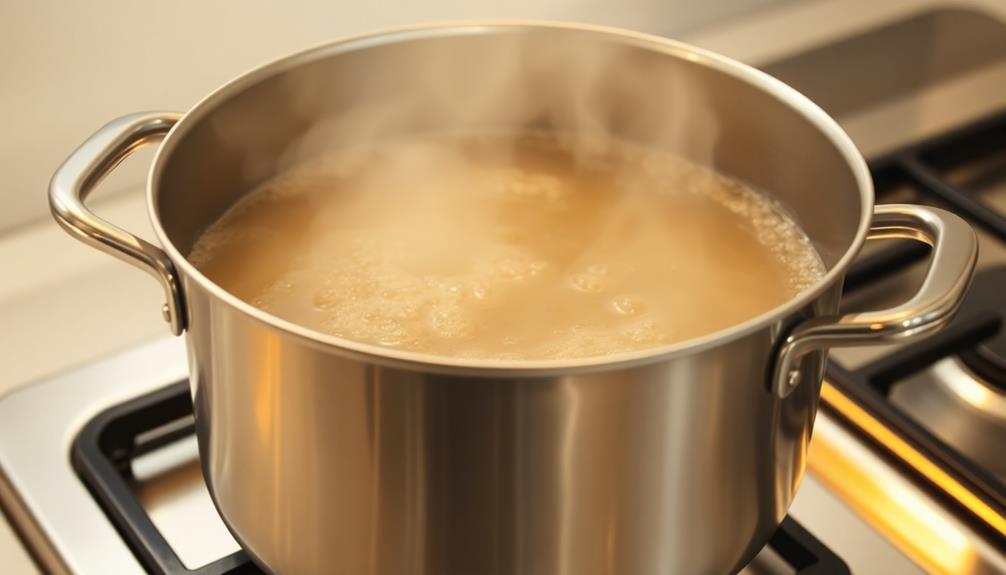
Next, you'll bring the broth to a gentle boil. This is an important step, as it helps to fully develop the flavors in the soup.
Carefully pour the prepared broth into a large pot and place it over medium-high heat. Keep a close eye on the pot, gently adjusting the heat as needed to maintain a gentle simmer. You don't want a rapid, rolling boil, as that can cause the ingredients to become overcooked or tough.
Instead, look for small bubbles gently breaking the surface of the liquid. This gradual heating process allows the spices and aromatics to infuse the broth, creating a rich, complex flavor profile.
Once the broth reaches this gentle boil, you can begin adding in the remaining ingredients, starting with the meat or proteins. This slow, steady approach ensures that every element of the dish is cooked to perfection, resulting in an authentic and delicious bowl of kuay tiew reua.
Step 2. Add Thinly Sliced Beef
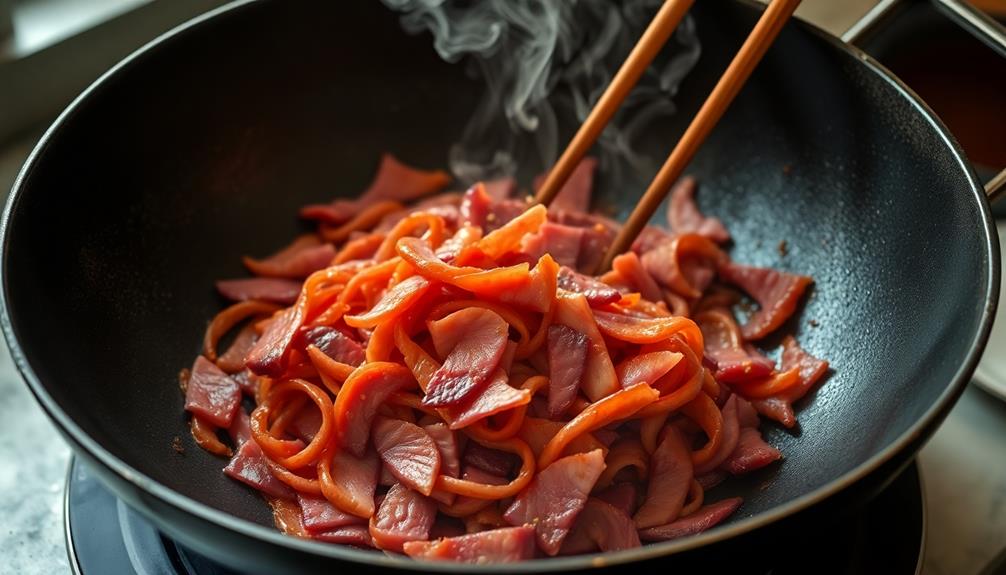
With the broth now at a gentle simmer, it's time to add the thinly sliced beef.
Grab your knife and carefully slice the beef into thin, bite-sized pieces. This will help the beef cook quickly and absorb the flavors of the broth.
Gently add the sliced beef to the simmering broth, making sure the pieces don't stick together. Let the beef cook for about 2-3 minutes, stirring occasionally, until it's just barely cooked through.
You don't want to overcook the beef, as it should still be tender and juicy. Once the beef is cooked, it's time to add the final touches to the dish.
Keep the broth at a gentle simmer and get ready to add the noodles and other toppings. With the beef now in the mix, the dish is really starting to come together.
Get ready for the next step!
Step 3. Add Chopped Cilantro
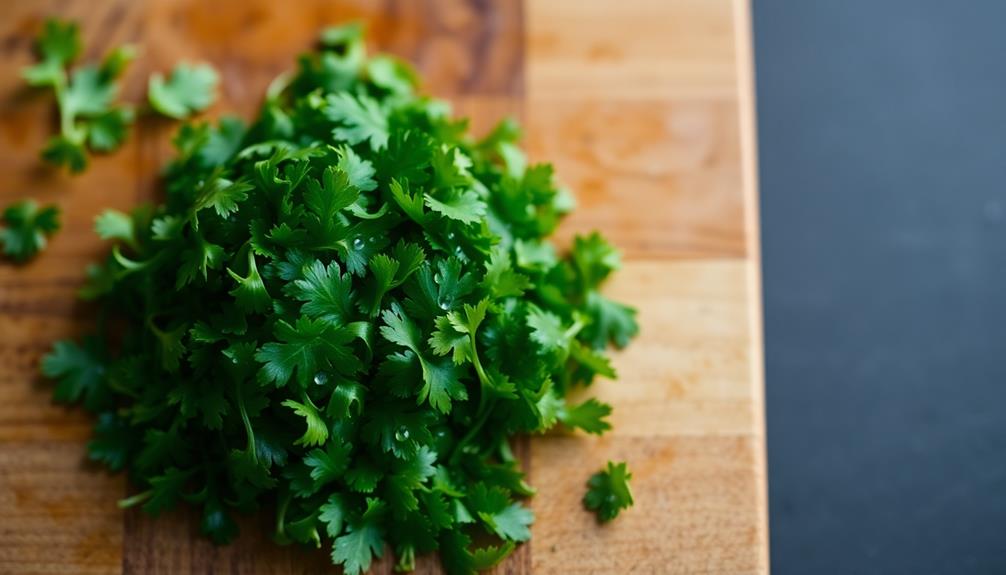
The fresh cilantro adds a vibrant, herbal note to the dish. Grab a handful of cilantro and give it a quick chop, making sure to include both the leaves and the tender stems.
You'll want to add this fragrant garnish right at the end, just before serving, so it retains its bright, fresh flavor. Sprinkle the chopped cilantro generously over the top of the noodles, letting it tumble down into the broth.
The cilantro's bright, grassy notes will complement the rich beef and the salty, savory flavors of the dish. Be sure to distribute the cilantro evenly, so each bite gets a touch of that herbaceous goodness.
The contrast of the tender noodles, the hearty beef, and the vibrant cilantro makes for a truly delightful and well-balanced dish. With the cilantro added, your Kuay Tiew Reua is now complete and ready to enjoy.
Step 4. Add Thinly Sliced Pork
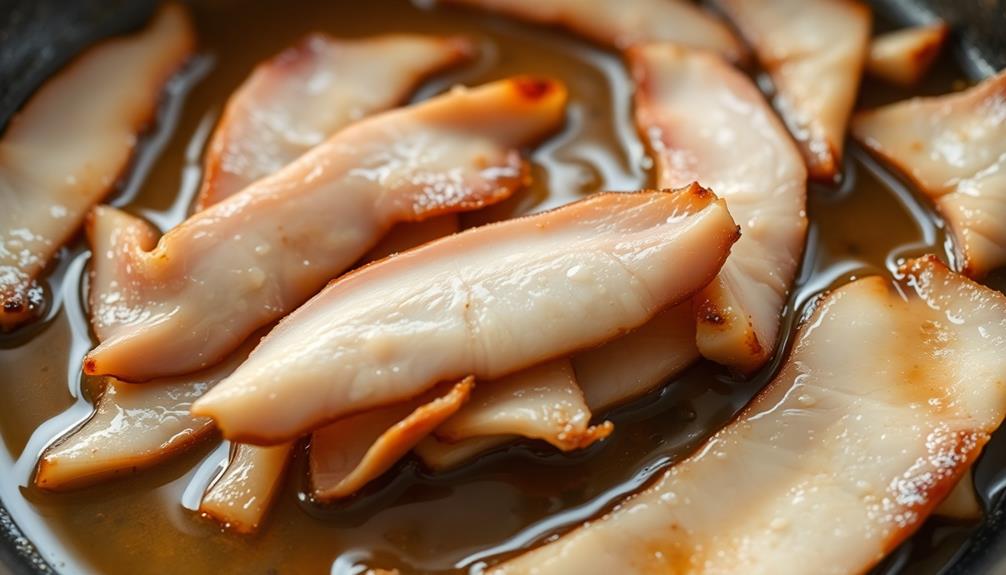
Thinly slice some pork loin or other lean pork cut into strips about 1/4 inch thick. You'll want to slice the pork across the grain to ensure tenderness.
Next, add the pork slices to the pot with the broth and other ingredients. The pork will quickly cook through, becoming tender and flavorful as it simmers in the aromatic broth.
Be sure to adjust the cooking time as needed, as the thickness of your pork slices can affect how long they take to cook through. You'll know the pork is done when it's no longer pink and has a silky, tender texture.
The pork should become an integral part of the overall dish, blending seamlessly with the noodles, broth, and other toppings.
Don't be afraid to experiment with the amount of pork you add. Some prefer a heartier, more protein-rich boat noodle, while others prefer a lighter touch.
Adjust to your personal taste preferences for the perfect bowl of Kuay Tiew Reua.
Step 5. Add Cooked Rice Noodles
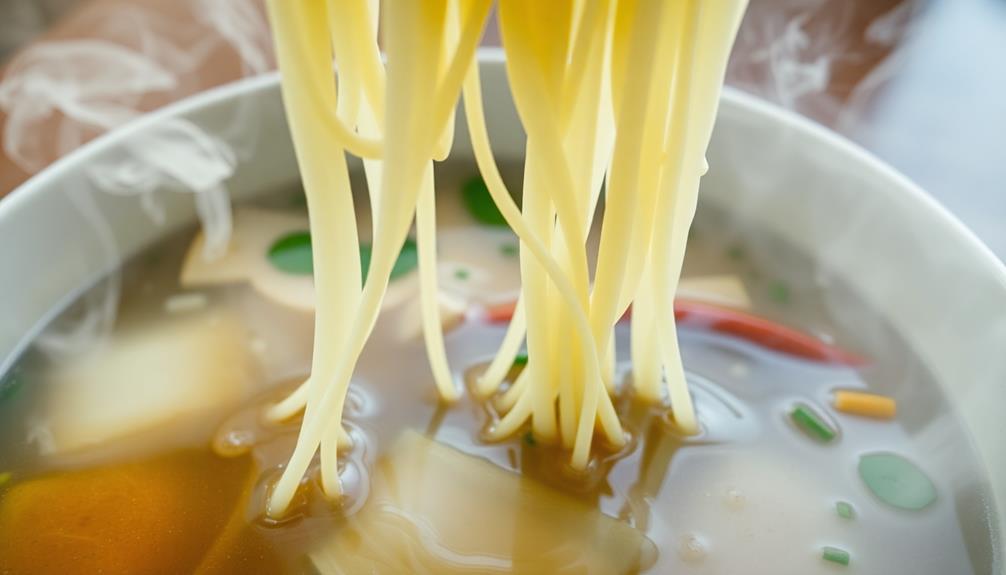
For the rice noodles, you'll want to cook them according to the package instructions. Typically, you'll need to soak the dried noodles in hot water for about 15 minutes until they're tender and pliable.
Once they're ready, drain the noodles and set them aside.
Next, you'll add the cooked noodles to the pan with the sautéed pork and other ingredients. Gently toss everything together, making sure the noodles are well-coated in the flavorful sauce.
You may need to add a splash of water or broth to the pan to help the noodles absorb all the delicious flavors.
Be careful not to overcrowd the pan, as you want the noodles to have enough space to heat through and get nicely incorporated with the other components.
Adjust the seasoning to your taste, adding a bit more fish sauce or chili flakes if you'd like a bolder flavor.
Serve the kuay tiew reua hot, garnished with fresh herbs and a squeeze of lime juice for a bright, vibrant finish.
Final Thoughts
As you reflect on the delightful journey through Kuay Tiew Reua, consider the lasting impression this iconic Thai noodle dish has left. The complex blend of savory, sweet, and sour flavors, combined with the tender meat and chewy noodles, truly elevates the senses.
This dish isn't just a meal – it's a cultural experience that transports you to the bustling streets of Thailand.
What makes Kuay Tiew Reua so special is its ability to bring people together. Whether you're slurping noodles at a local street stall or sharing a bowl with friends, the communal aspect of this dish is undeniable.
Its versatility also shines, as you can customize it to suit your personal preferences, making it a truly adaptable culinary delight.
As you savor the last bites, remember the joy and satisfaction this dish has brought. Kuay Tiew Reua is more than just food – it's a testament to the rich culinary heritage of Thailand, a tradition that continues to captivate and delight.
Frequently Asked Questions
What Is the Origin of the Name "Boat Noodles"?
You're wondering about the origin of the name "boat noodles," aren't you? The name refers to the traditional method of serving this dish – from small boats on the river, catering to hungry customers. One popular theory for the origin of the name comes from the fact that these boats were often small and cramped, requiring the customers to squat or sit close to the water. This led to the term “boat noodles” to describe this unique dining experience. Another theory suggests that the name comes from the Thai word for “cramped” or “small” because of the tight quarters in which the noodles were served. Regardless of the origin of the name, one thing is for certain – the delicious and unique flavors of the goong ten recipe keep people coming back for more.
How Long Does It Take to Prepare Kuay Tiew Reua?
Preparing this dish takes some time. You'll need around 45 minutes to an hour to get everything ready, from prepping the ingredients to simmering the noodles and broth. It's a labor of love, but the delicious result is worth the effort.
Can Kuay Tiew Reua Be Made Vegetarian or Vegan?
Yes, you can certainly make a vegetarian or vegan version of this dish. Simply omit the meat and use vegetable broth or plant-based protein instead. Get creative with your veggie toppings for a tasty meatless meal.
How Do I Choose the Right Type of Noodle for Kuay Tiew Reua?
When choosing the right noodle, consider the texture you prefer. Thicker, chewier noodles work well for heartier dishes, while thinner, more delicate noodles suit lighter soups. Experiment to find the noodle that best complements the flavors and ingredients you're using.
Is Kuay Tiew Reua a Common Street Food in Thailand?
Yes, you'll find kuay tiew reua, or boat noodles, being sold by street vendors throughout Thailand. It's a beloved and ubiquitous local dish that's both delicious and convenient for on-the-go dining.
